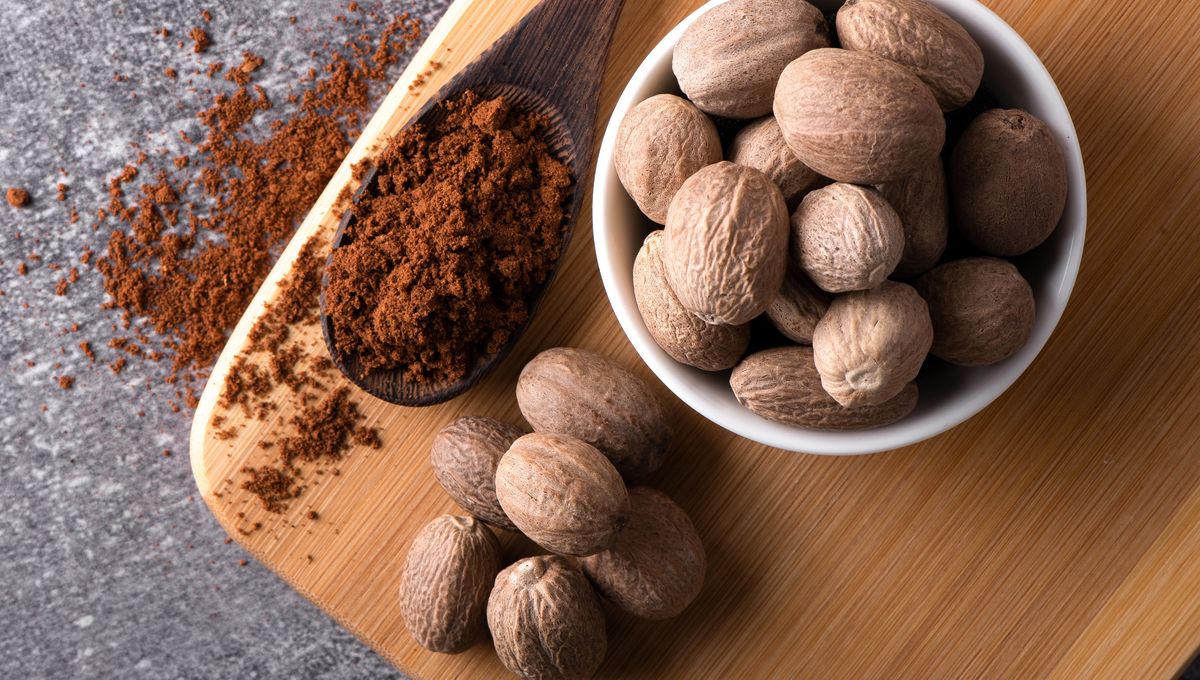
From adding a bit of warm sweetness to baked goods to spicing up meats, sausages or sauces, nutmeg can be found in many kitchen cupboards across the world. But this household spice has a lesser-known effect if consumed in high quantities – it can be a dangerous hallucinogen.
For centuries, nutmeg was highly prized throughout Europe and the Middle East. It was not only sought for its flavor, but also for the range of medical properties it was thought to have. This demand alone made it expensive, but its price was even higher because of how difficult it was to obtain. Until the 19th century, the trees that produced the spice, the Myristica fragrans tree, only grew in one place – the Maluka Islands of Indonesia.
Today, the spice can be found in most local supermarkets and few of us have reason to think about its longer history. However, it also has another property that we rarely consider, but the 2020 TikTok trend, the “#nutmegchallenge”, brought it to popular attention.
High on nutmeg?
Nutmeg contains a compound called myristicin, which also naturally occurs in other spices and plants such as parsley and dill, but it is most abundant in nutmeg seeds.
In the wild, the compound serves as a natural insecticide and acaricide (something toxic to mites and ticks), but in the human body, it can act in a similar way to mescaline. That is because it breaks down into compounds that impact the central nervous system by enhancing the neurotransmitter norepinephrine, a hormone that increases our heart rate and blood pressure.
If consumed in high enough quantities, this form of nutmeg intoxication can produce hallucinations, nausea, confusion, and dizziness. It can also lead to much more serious complications.
Myristicin intoxication
To be clear, this is not a new discovery. People have been aware of the toxic effects of nutmeg since the 16th century, but it is not something that is commonly talked about. Once upon a time, so the story goes, crusaders would consume nutmeg seeds in an attempt to get high while they traveled long distances – it was meant to overcome the boredom of long marches and the accompanying foot pain. It is even likely that nutmeg was responsible for the less than reliable predictions made by Nostradamus in the 16th century.
It is also worth stressing that you need to take quite a bit to feel these effects – the usual amount found in your food will not do it.
Generally speaking, you need to consume around 5 grams (0.18 ounces) of nutmeg (around two teaspoons) before the psychotropic impacts kick in. But kick in they shall and it would be a mistake to try it.
Firstly, myristicin intoxication comes with a pretty potent hangover which will leave you feeling pretty crappy for two or so days, but it can also cause seizures and heart palpitations. Unfortunately, the compound can also cause comas and even death (especially if used in combination with other drugs).
The only difference between consuming it, smoking it, or inhaling it is the speed at which the psychotropic effects manifest. Though ingestion is the slowest way, which makes it slightly less dangerous than the alternatives.
So it may seem like a cheap and easy way to get a quick high, but it is clear that the potential risks associated with nutmeg intoxication far outweigh the psychoactive effects it may produce. There are far easier and safer ways to get kicks – leave the nutmeg for the cakes and sausages.
The content of this article is not intended to be a substitute for professional medical advice, diagnosis, or treatment. Always seek the advice of qualified health providers with questions you may have regarding medical conditions.
All “explainer” articles are confirmed by fact checkers to be correct at time of publishing. Text, images, and links may be edited, removed, or added to at a later date to keep information current
Source Link: Can Nutmeg Make You High?